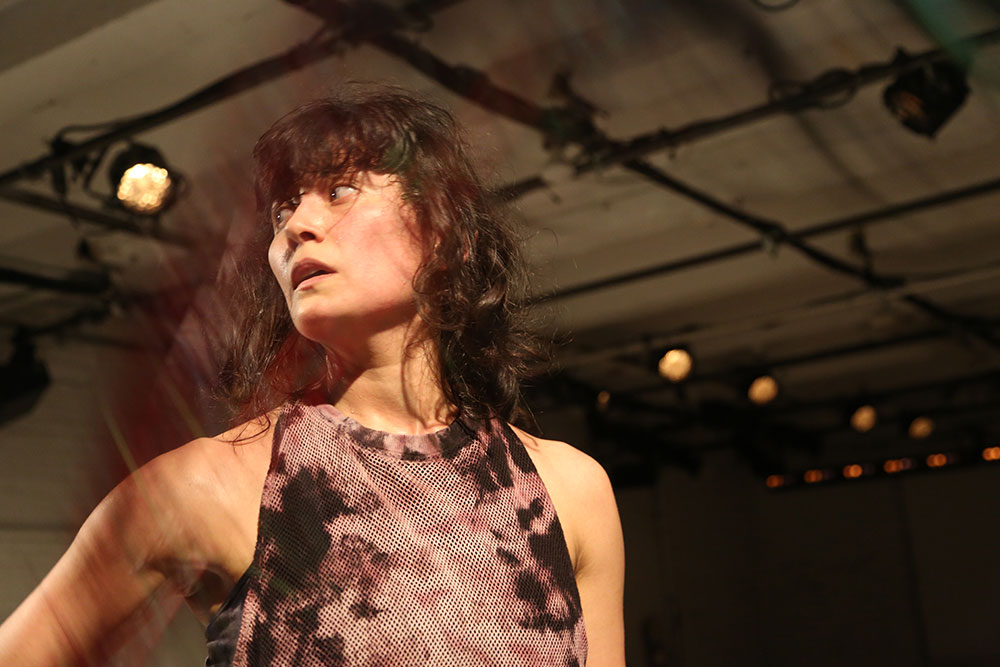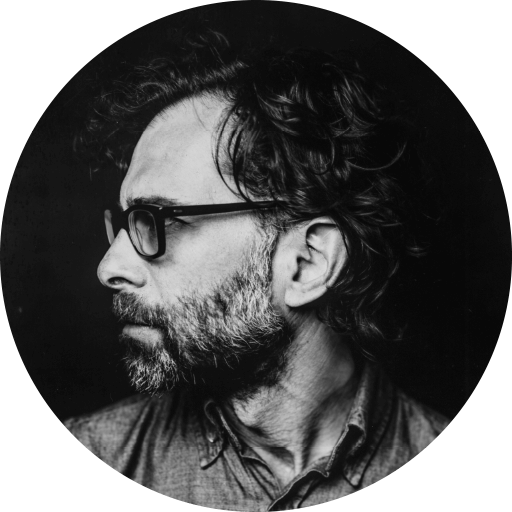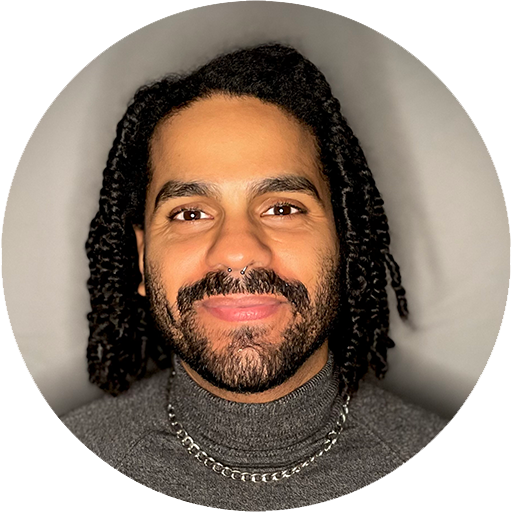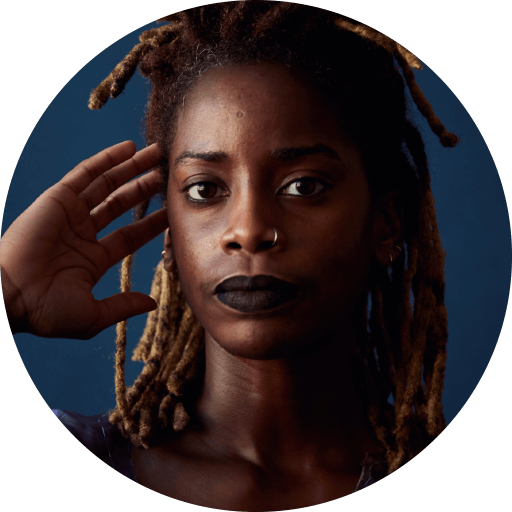Legend
Martha Sherman, dance view times
Martha Sherman, dance view times
Joseph Campbell’s hero had a thousand faces; Michelle Boulé came close, in her mythically-inspired “The Monomyth,” a work that wove through countless emotional and physical states, many of them expressed most viscerally in her beautifully plastic face. The Chocolate Factory, with white textured walls and the raw feel of industrial space, was a perfect canvas; Boulé painted unfolding and shifting stories, and every character was a part of her.
“Monomyth” was told in several scenes, each of them boxed or framed in light, by Natalie Robin. The depth of the Chocolate Factory stage became a wide track for Boulé’s rich movement; her body is liquid, and she traversed the open space, like a racehorse around a track, her limbs pulling and pushing her torso in boldly forward. The same fluidity rolled her into unlikely postures; in one, she shifted from a crouching squat, and torqued in a simple twist onto her back, transforming into a four-legged crab, her face lifted toward the sky. Boulé, who has long danced with Miguel Gutierrez, has taken the boldness of his challenging choreography, and smoothed it by adding softer lines, tender and evocative as well as rebellious.
Boulé entered casually, upstage, carrying a small speaker that blared rhythmic, dated rock music. For several long minutes, she stood like a statue, then raised her arms slowly, as if a bird’s wings, then slowly wound them around as her face lit with a beatific smile – before her cheeks and mouth then collapsed into a grimace of terrible pain. She offered not just the pair of Greek masks, comedy and tragedy, but her plastic face continued to shift, a multi-faceted heroine.
As the light shone on her, it caught the gleam of gilding that covered one ear lobe, another subtle sculptural and mythic image. Her hands and fingers moved lightly, as if conducting or speaking into the air with the movement, then she glided around the stage in high prancing steps. Her head and neck bobbed, craning and seeking. Her body seemed capable of almost anything, continuous shifts of motion and emotion.

The music was a surprising mix of rock, rhythm, the taped voice of scholar Joseph Campbell, and occasional bells. Near the end, a throbbing soul song proclaimed “You deserve a standing ovation,” during the dance she did festooned in peacock feathers, a tribal queen in her glory. There were silences, as well, sad, pensive, powerful; each pause felt different in its unique context.
And then there was the mythic banana. Barely noticeable when we entered, it perched on a pair of nails, about shoulder height, on the wall. Sure enough, it became part of the art, a phone that stone-faced Boulé picked from the wall and strained to hear, as the soundtrack gave her a hang-up buzz. Later, perched on the opposite wall, it because a communication weapon. She shrieked into it, face contorted with demand and rage (to the blast of Hot Chocolate’s “You Sexy Thing.”) In between, she held it above her head in a stately procession across the stage, like a minotaur’s golden horns. Boulé’s ability to create multiple images (and stories) in rapid succession with so simple a prop was part of her magic.
Her most evocative props were a handful of golden balloons blown up with a bicycle pump. Tucking the balloons into her costume, Boulé created the mythic earth goddess often seen in tribal African sculpture with a huge chest, buttocks, and belly. Although the exaggerated female fecundity was grotesque, Boulé was both elegant and awkward, rolling carefully in her bulges as Joseph Campbell’s voice sounded on a tape in the background (“Where we thought to be alone, we shall be with all the world.”) Then, transforming yet again, she moved the balloons from back to front, now distorted and out-sized male genitalia. After she removed the balloons, she became a salamander (or a sperm?) with legs swimming her along the floor, as she collected the golden balloon eggs between her thighs. Then another shift, as Boulé created a pediment made of golden balloons, framed in the splay of her perfectly split legs — a mini-Parthenon.
When her body twitched and rolled, arms and legs shooting out from positions on the floor, Boulé seemed a hunted animal. Then she became the huntress; she stretched one arm back, and bent another as if with a bow, and, as Diana, she screamed aloud. Slowly, she rolled her body the full length of the room, ending upstage, her legs angled up the back wall, surrounded by golden balloons, with the sound of electronic waves pushing her.
Boulé gathered a bundle of peacock feathers, along with a lemon-shaped rattle, in a sheaf that she shook at the audience as if to awaken us (this, too, seemed an echo of an ancient tradition, the Jewish custom of shaking the lulav and etrog in the harvest holiday of Sukkot.) Accompanying her, Campbell’s voice on tape described a pair of symbolic rituals, the male bullfighter and the priestess of the King Cobra. In the cobra ritual, the woman performed the heroic act — instead of killing the beast, she kissed him three times on the nose to gain his blessing.
After shaking the sheaf of feathers in her own ritual, Boulé placed the plumes around her head, like an enormous corona or halo, then she rolled her body and the delicate headdress in a sensuous circle around the floor. A second plumed dancer, Bryn Hlava, joined Boulé in a brief paired rhythmic duet –- a glancing reminder that there are more mythic woman than one.
Finally, in the simple downstage light that had framed the opening, Boulé quietly reprised her early dance of knees and fingertips, and offered a quiet coda to this brief encyclopedia of heroic mythic images, a woman of marvelous power and complexity. The song that played earlier was right: she got the standing ovation she deserved.
Martha Sherman for danceviewtimes – May 22, 2017.





























